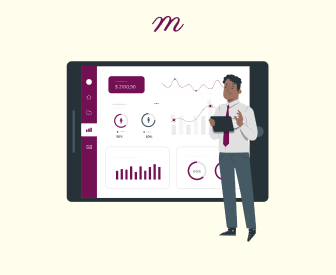Accurate coding is critical for proper billing, record-keeping, and statistical analysis. It is the linchpin that connects various aspects of client care, administrative processes, and research data and analyses. Accurate and appropriate coding is even more critical in the field of mental health, where understanding the client’s condition through precise codes is essential for proper treatment, billing, and record-keeping. One of the most sensitive and vital aspects of mental health coding is addressing issues related to suicidal ideation.
This article will shed light on the importance of accurate coding for suicidal ideation using ICD-10 codes, ensuring that mental health professionals can effectively document and manage this delicate matter. With Mentalyc, you can go a step further: the platform helps you justify diagnostic choices, capture both protective factors and risk factors, and keep your documentation clinically sound and insurance-ready – while reducing the time and stress of writing it all yourself.
Mental Health Coding – Why is it Important?
Accurate coding in the field of mental health serves three key purposes:
Billing and Reimbursement: Mental health professionals are more likely to receive fair reimbursement for their services when they use accurate codes. Correct billing prevents disputes and ensures financial viability for mental health practices.
Record-Keeping: Accurate coding facilitates comprehensive client records, offering a detailed history. Records are invaluable for client care continuity, providing a comprehensive understanding of the client’s condition and progress for future treatment, assessments, and evaluations.
Statistical Analysis: Accurate coding allows for the gathering of data for research, epidemiology, and the development of evidence-based practices. Mental health professionals can identify trends, effectively allocate resources, and implement preventive measures.
This article offers guidance on how to find the right ICD-10 code for suicidal ideation, ensuring that mental health professionals can accurately document and manage this complex condition.
Understanding Suicidal Ideation
Suicidal ideation encompasses a range of thoughts, fantasies, or contemplations about taking one’s own life. These thoughts can vary in intensity, from fleeting and passing to more persistent and compelling. Understanding and addressing suicidal ideation is of critical importance within the mental health field because when a client experiences suicidal ideation, it indicates a crisis that demands immediate attention and intervention. Documenting and managing this issue can be exceptionally challenging due to its sensitive nature.
Suicidal ideation is not a one-size-fits-all concept because it manifests differently in each person. Many factors may be involved, including personal experiences, mental health history, social support, and current life circumstances. Some individuals may experience passive thoughts about death without a concrete plan, while others may have meticulously planned out their suicide. Some people may view suicide as an escape from unbearable pain, while others might see it as a way to end being a burden. Understanding this complexity is required for effective intervention.
Promptly recognizing and addressing suicidal ideation is non-negotiable. These thoughts indicate significant psychological distress and vulnerability. The risk of transition from ideation to intent or even a suicide attempt is real and imminent. So, mental health professionals must treat any mention of suicidal ideation with seriousness, ensuring immediate intervention and support.
Properly documenting suicidal ideation is a matter of client safety. Accurate and thorough documentation serves as an essential tool for continuity of care, allowing for the tracking of the progression of the client’s condition, assessing the effectiveness of interventions, and making informed decisions about treatment planning. In a crisis, having a well-documented history of the client’s suicidal ideation can be a lifeline.
In addition, comprehensive documentation is key for developing an effective treatment plan. It provides a baseline for assessment and guides the selection of appropriate interventions. A history of suicidal ideation enables mental health professionals to tailor treatment approaches to address the client’s specific needs and risk factors.
Clients may be reluctant to openly discuss their thoughts and feelings because of the stigma surrounding suicide and the fear of judgment can limit communication. Mental health professionals must create a safe, non-judgmental, and empathic environment that encourages clients to openly share their experiences. Establishing trust is vital to accurately document and address suicidal ideation.
Remember: suicidal ideation is not a one-time event. It may ebb and flow over time. Engage in ongoing monitoring and assessment to ensure the client’s condition is improving and they are safe from immediate harm. Regularly update the documentation to reflect changes and guide treatment.
Suicidal ideation is a multifaceted and sensitive issue that demands immediate attention and intervention. Proper documentation and coding are not only critical for client safety but also for effective treatment planning and ongoing care. Approach this task with sensitivity, empathy, and a deep commitment to clients’ well-being, recognizing that everyone’s experiences are unique and complex.
ICD-10 Codes for Suicidal Ideation
The International Classification of Diseases, 10th Edition (ICD-10), provides a standardized system for coding medical diagnoses, including mental health conditions. For suicidal ideation, mental health professionals must consider the following ICD-10 codes:
F32.9 – Major depressive disorder, single episode, unspecified: Use when a client presents with symptoms of major depression, including suicidal ideation, but the severity or specific subtype of depression is unspecified.
F33.9 – Major depressive disorder, recurrent, unspecified: Like F32.9, use this code when recurrent episodes of major depression, including suicidal ideation, are present, but the severity or specific subtype is unspecified.
Z91.5 – Personal history of self-harm: Use when a client has a history of self-harm, which can include suicidal ideation or attempts; helps in documenting the client’s background and potential risk factors.
R45.851 – Suicidal ideation: More specific; particularly helpful when the primary concern is suicidal ideation.
Selecting the appropriate ICD-10 code depends on clinical assessment and diagnosis. Mental health professionals must accurately capture the client’s severity of symptoms to ensure the correct code is assigned.
Challenges in Coding for Suicidal Ideation
While coding for suicidal ideation is standardized, mental health professionals may be presented with several challenges. Understanding and addressing these challenges ensures clients receive the appropriate care and support they require. Here are some specific issues to consider.
Subjectivity and Personal Experience
Suicidal ideation is a deeply personal and subjective experience because these thoughts reside within the realm of a client’s thoughts and emotions. It can be difficult to quantify and categorize these thoughts. Mental health professionals often rely on a combination of clinical judgment and client self-reporting to assess the presence and severity of suicidal ideation. This subjectivity may introduce variability in coding, as different clinicians may interpret and document the same client’s experiences differently. To address this challenge, professionals undergo rigorous training and adhere to standardized assessment tools to ensure consistency.
Co-occurring Conditions
Suicidal ideation rarely occurs in isolation, as it frequently co-occurs with other mental health conditions like mood disorders, anxiety, or borderline personality disorder. Accurate coding involves identifying suicidal ideation and documenting all relevant co-occurring conditions (which may involve additional ICD-10 codes). Mental health professionals must conduct thorough assessments to ensure a holistic understanding of the complexity of a client’s mental health.
Evolving Situations and Fluctuating Severity
Severity can be highly dynamic and may change rapidly. A client who presents with mild suicidal ideation during one session may experience a significant escalation during the next. Documentation must reflect fluctuations to offer a real-time picture of the client’s condition. Be vigilant in tracking changes and making adjustments accordingly. The steps taken in response to evolving suicidal ideation are critical aspects of documentation. Clinicians may need to revise a treatment plan, increase monitoring, or even consider hospitalization.
Collaboration
Suicidal ideation often requires a multidisciplinary approach, involving not only mental health professionals but also primary care physicians, emergency responders, and other healthcare providers. Effective communication and collaboration support comprehensive care and accurate coding. Ensure that all involved parties are aware of the client’s mental health history and treatment progress for client safety.
Privacy and Confidentiality Concerns
Clients may be hesitant to share suicidal ideation because of privacy and confidentiality concerns. Mental health professionals must uphold ethical standards and legal obligations regarding client confidentiality while still providing appropriate care. This challenge underscores the importance of creating a safe and trusting therapeutic environment where clients feel comfortable openly discussing their thoughts and feelings.
By recognizing and addressing the above challenges, mental health professionals can navigate the coding process more effectively, ensuring that clients receive the appropriate care and support required to manage and overcome suicidal ideation while safeguarding their well-being.
With Mentalyc, clinicians gain the added assurance of HIPAA- and PHIPA-compliant documentation. The platform not only integrates ICD-10 coding but also captures risk and protective factors securely, so therapists can document sensitive disclosures with accuracy and confidence, without compromising client trust.
Find the Correct ICD-10 Code for Suicidal Ideation
The International Statistical Classification of Diseases and Related Health Problems, 10th Revision (ICD-10) categorizes codes and associated criteria to assist mental health professionals in the assessment of suicidal ideation. ICD-10 codes offer a path toward appropriate treatment and accurate insurance billing. Accurately diagnosing the client is essential for the development of an effective treatment plan. Here is what you need to know about diagnosing suicidal ideation using ICD-10 coding. Follow these steps:
1. Consult the ICD-10 Manual. The ICD-10 online manual is a valuable resource for finding the correct code. Start with the mental health disorders section, which is categorized under “F” codes (Mental, Behavioral, and Neurodevelopmental Disorders). 2. 3. Verify Specificity. Ensure the specific characteristics and any associated features. Use additional codes to indicate comorbid conditions or symptoms that accompany suicidal ideation. 4. 5. Ensure Documentation Accuracy. To accurately code, rely on precise and comprehensive documentation. Records must contain information about the client’s symptoms, duration, severity, comorbid conditions, psychosocial history, and more. Thorough documentation ensures the code accurately reflects the client’s mental health diagnosis. 6. 7. Remain Updated. ICD-10 codes are periodically updated to reflect changes in knowledge and terminology. It’s essential to stay informed about any revisions or additions to the codes related to suicidal ideation to ensure accurate coding. 8.
Treatment of Suicidal Ideation in Mental Health Practice
As mentioned previously, suicidal ideation involves thoughts, fantasies, or contemplations about taking one’s own life. This serious mental health concern demands immediate attention and intervention. Effective treatment typically involves a combination of therapeutic approaches and support systems tailored to the client’s needs. Consider the following:
Crisis Intervention:
The first step occurs if a client expresses thoughts of self-harm. Mental health professionals immediately prioritize safety. This may involve hospitalization or intensive outpatient care to ensure the client is not an imminent danger to themselves.
Psychotherapy:
Cognitive-behavioral therapy (CBT) and dialectical behavior therapy (DBT) are often the cornerstones of treatment for suicidal ideation. These therapies allow clients to identify and modify negative thought patterns, develop coping skills, and enhance emotional regulation. The therapeutic relationship provides a safe space for clients to explore feelings and experiences.
Medication:
Antidepressants, mood stabilizers, and anti-anxiety medications may help alleviate underlying mental health conditions, such as depression or bipolar disorder, which can contribute to suicidal ideation. Medication used in conjunction with psychotherapy is most effective.
Safety Planning:
Developing a structured plan to manage moments of crisis or heightened distress is essential. Triggers, warning signs, and coping strategies are identified. Having a safety plan in place can help clients manage suicidal thoughts and reduce the risk of acting on them.
Support Systems:
Building a strong support network is crucial for clients with suicidal ideation. This network may include friends, family members, support groups, and crisis hotlines. Engaging in open communication and seeking help from loved ones is essential.
Addressing Underlying Factors:
Identify and address any underlying factors contributing to suicidal ideation, such as trauma, substance abuse, or chronic pain. Targeted interventions may be necessary to address root causes.
Long-Term Follow-Up:
Suicidal ideation may recur or evolve, and long-term follow-up and continued therapy help clients maintain stability, develop resilience, and prevent relapse. Regular check-ins are essential for ongoing support.
Education and Awareness:
Education about mental health, suicide risk factors, and available resources is an essential part of treatment planning.
Crisis Helplines and Hotlines:
Provide information about crisis helplines and hotlines, such as the National Suicide Prevention Lifeline, for immediate support and guidance.
The treatment plan for suicidal ideation must be tailored to the client’s unique circumstances and needs. Prompt intervention, a comprehensive approach to care, and ongoing support are key elements in helping clients manage and overcome suicidal ideation – ultimately fostering hope, resilience, and recovery.
Conclusion – Importance of Accurate ICD-10 Coding for Suicidal Ideation
Accurate coding is an essential aspect of mental health care, enabling proper diagnosis, effective treatment, and streamlined billing. When it comes to suicidal ideation, locating the correct ICD-10 code is the key to appropriate documentation and management of this complex and sensitive mental health condition. Remaining current with the latest coding guidelines is important to ensure compliance with current standards. By following these guidelines, mental health professionals can contribute to the accurate classification and treatment of suicidal ideation, ultimately improving the safety and well-being of clients.
Why other mental health professionals love Mentalyc

“A lot of my clients love the functionality where I can send them a summary of what we addressed during the session, and they find it very helpful and enlightening.”
Therapist

“By the end of the day, usually by the end of the session, I have my documentation done. I have a thorough, comprehensive note … It’s just saving me hours every week.”
CDCII

“It takes me less than 5 minutes to complete notes … it’s a huge time saver, a huge stress reliever.”
Licensed Marriage and Family Therapist

“Having Mentalyc take away some of the work from me has allowed me to be more present when I’m in session with clients … it took a lot of pressure off.”
LPC







